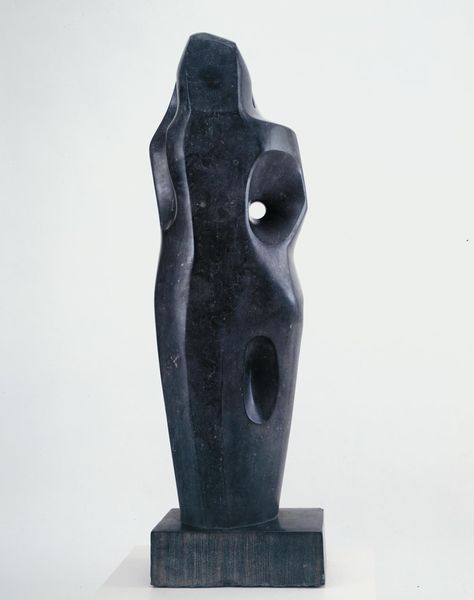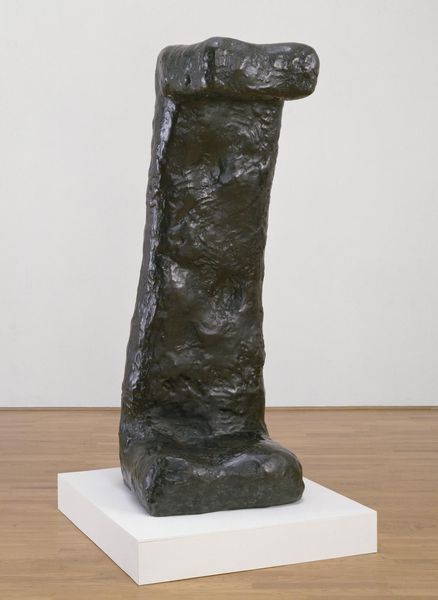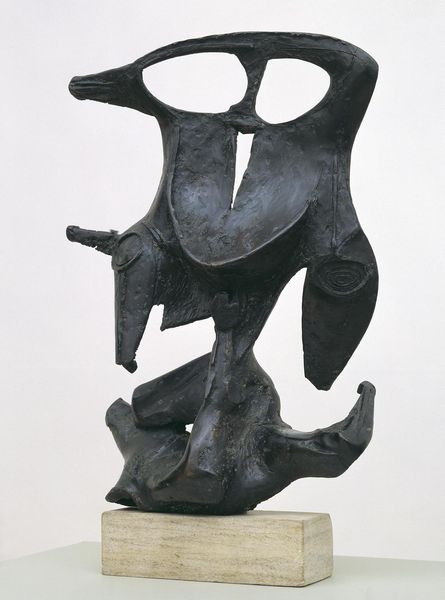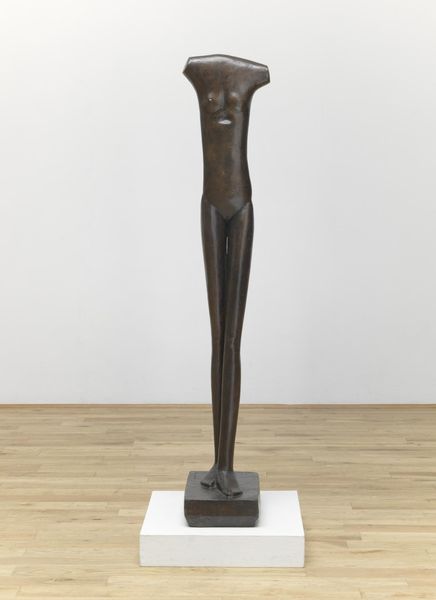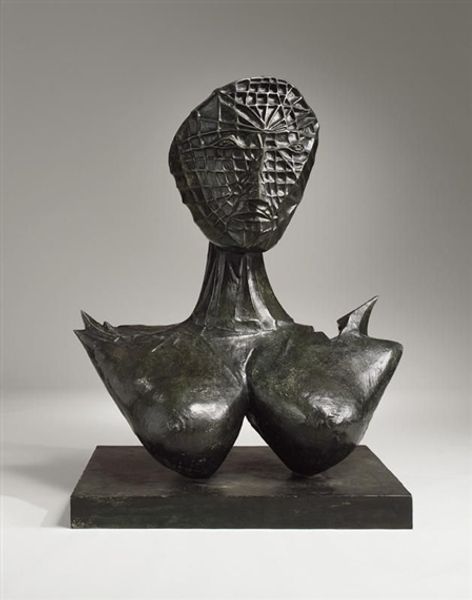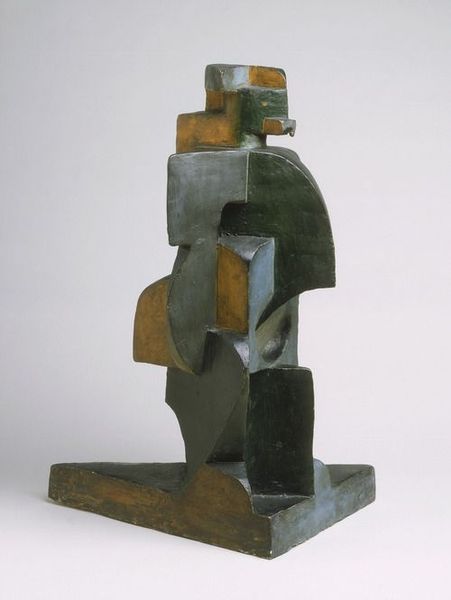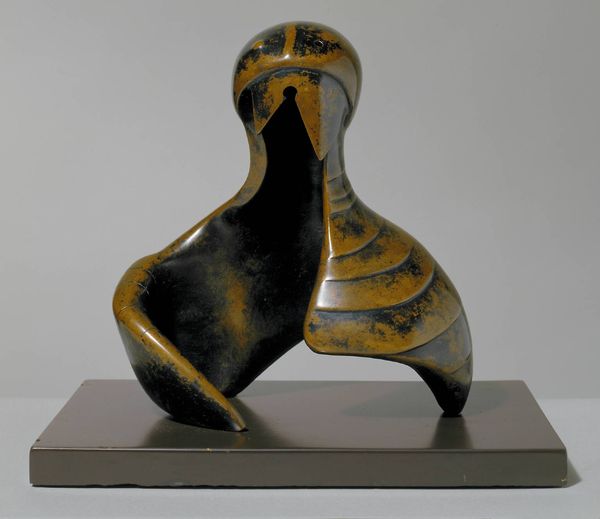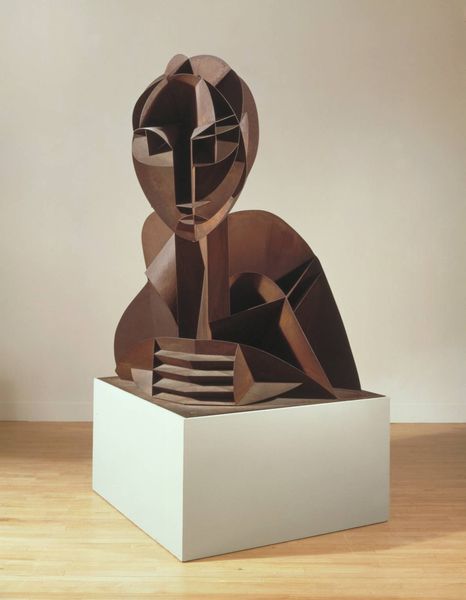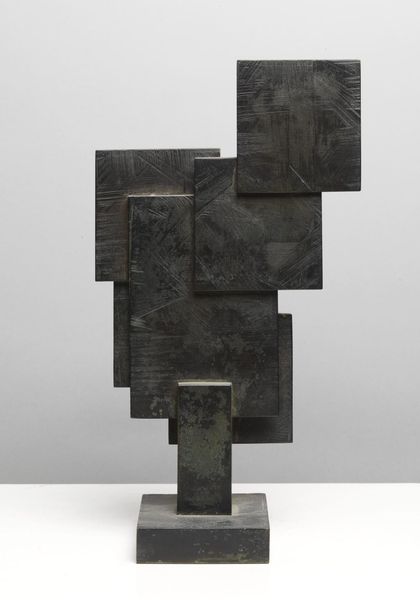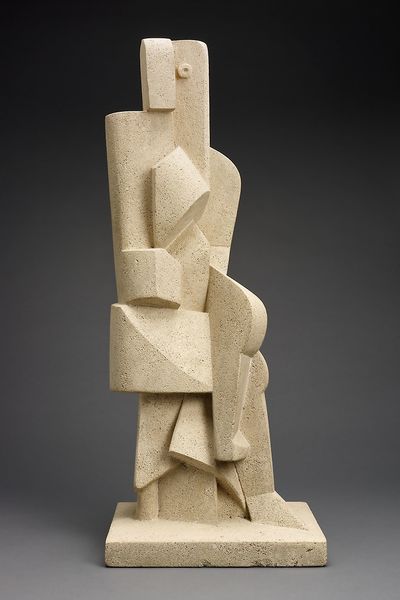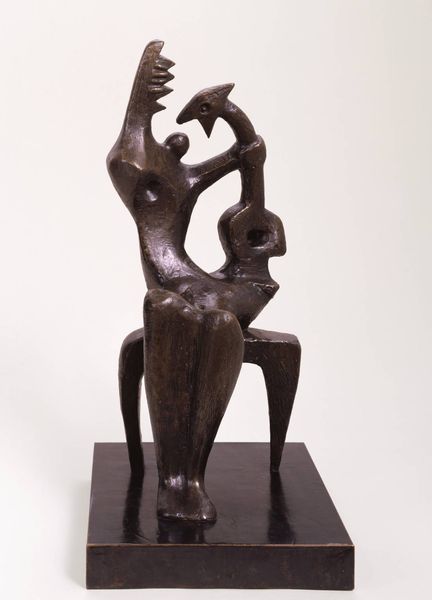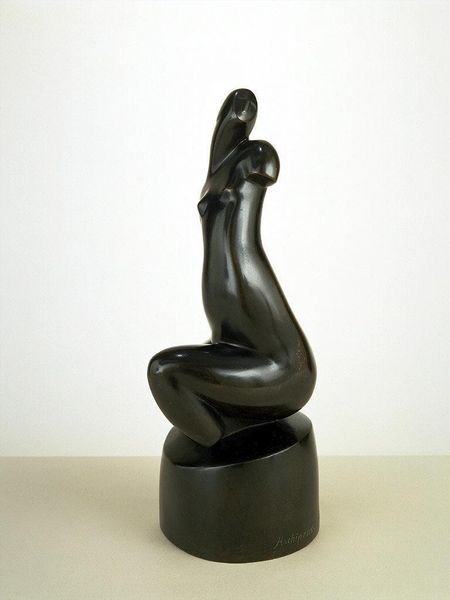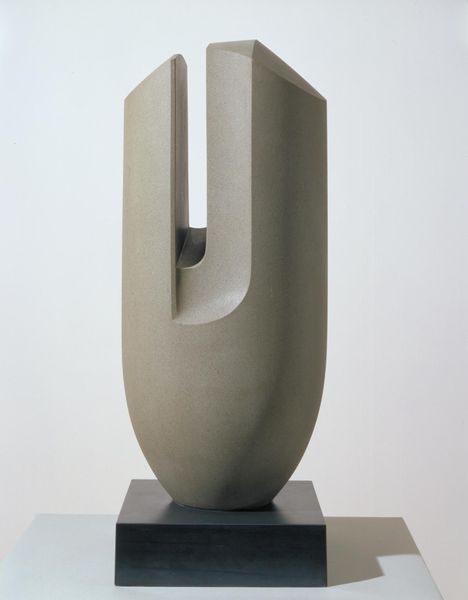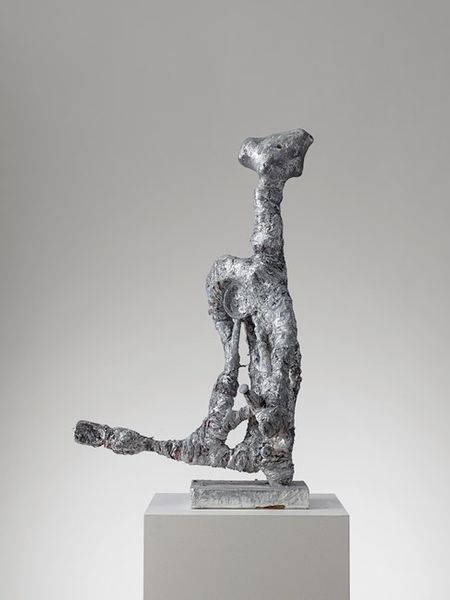
carving, metal, sculpture
#
cubism
#
carving
#
metal
#
sculpture
#
constructivism
#
form
#
sculpture
#
abstraction
Copyright: Public domain
Curator: Otto Freundlich's "Composition," created in 1933, stands before us—a sculpture carved from metal. What impressions strike you? Editor: It looks like something ancient, doesn't it? A lost god from a forgotten civilization. It has this monolithic presence, yet it feels…broken somehow, like fragments yearning to be whole. Curator: Yes, there's a powerful sense of incompleteness. Freundlich was deeply influenced by Cubism and Constructivism, styles that fragmented reality and reassembled it into new forms. This sculpture reflects those themes, pushing the boundaries of recognizable forms. It also hints at primitivism, suggesting an enduring connection to our deepest, earliest mythologies. Editor: I love that tension—the modern striving for the primal. It feels very…German, actually, this brooding, earthy quality wrestling with a desire for pure, abstract form. Curator: Absolutely. And within that tension lies the core symbolism: a pursuit of universal harmony, a longing to synthesize art and life. Freundlich aimed to evoke a sense of unity through pure abstraction. His use of metal adds another layer—durable yet capable of being reshaped, reflecting humanity's ongoing evolution. Editor: You know, looking at the rough texture of the metal, it feels like touch is really important here. You want to run your hands over it, feel the shapes rise and fall. It invites a different kind of understanding than just seeing. Curator: Indeed. The tactile experience is integral. He encourages us to engage with the sculpture not just intellectually but viscerally. To feel its weight, its presence, its almost geological history. The geometric abstraction doesn't negate the body, it speaks directly to it. Editor: It makes me wonder, though—did Freundlich see the rising darkness in Europe as he created this? Does that contribute to the fractured feeling? Curator: Possibly. He was, tragically, later murdered in a concentration camp, deemed "degenerate" by the Nazis. The sculpture is not explicitly political, but given Freundlich’s fate, it's hard not to view it through the lens of history, imbuing the "fragments" with the premonition of imminent destruction. Editor: It's haunting. You start seeing it not just as art, but as a testament. I think I'll carry that weight with me for a while. Curator: It reminds us of art's enduring power, even, or perhaps especially, amidst chaos and profound loss.
Comments
No comments
Be the first to comment and join the conversation on the ultimate creative platform.
